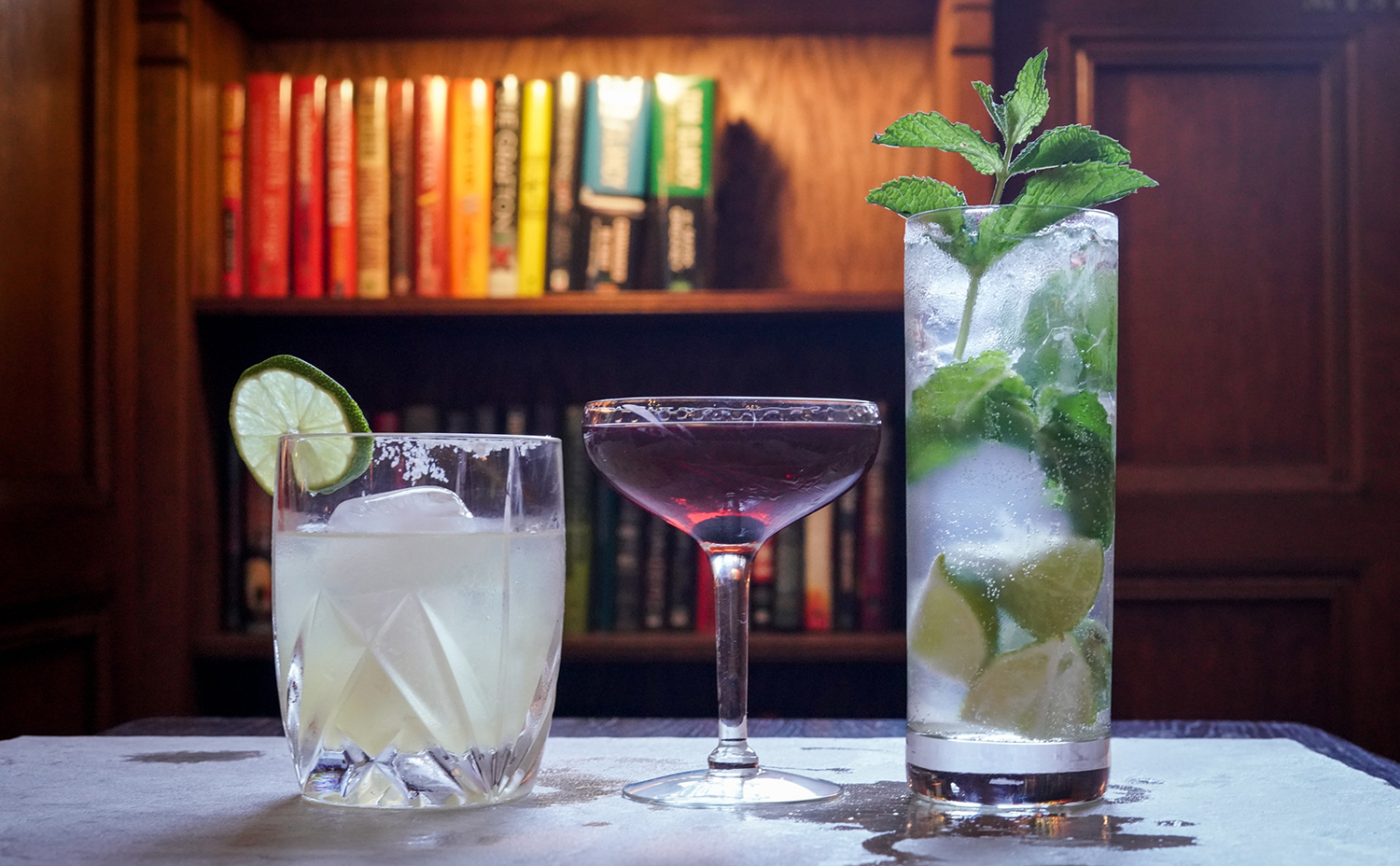Shanna Farrell is brimming with stories.
As an interviewer at The Bancroft Library’s Oral History Center and the author of 2017’s Bay Area Cocktails: A History of Culture, Community and Craft, she has explored the people, places, and pours that have defined the Bay Area’s modern cocktail renaissance, one conversation at a time.
We turned the tables on Farrell, asking her to show us how to make a few drinks that have been essential to the Bay Area’s cocktail culture — from pre-Prohibition to the dot-com era — and reveal the stories behind them. (The recipes are below.)
Why are you interested in cocktails?
I really like cocktails because I see them as vehicles for different facets of life and the intersection of a lot of things. For me, it’s not really about what’s in the glass, but it’s about how everything got there. So it’s the intersection of history, it’s the intersection of race, class, gender, agriculture, labor, legal regulations, and laws.
Also, I think the community factor is a really big deal. It’s where I find my people.
Do you have any pet peeves when it comes to cocktails?
I see spirits as agricultural products, and I want people to be thoughtful and ask questions about where their stuff is coming from. It really bothers me when a restaurant that is known for its responsible sourcing has a bar and those same principles that apply in the kitchen don’t translate to the bar.

I wanted to ask you about those cocktails we just made. We did the Martinez first.
That is a classic drink that actually originated in Martinez, California. There’s a lot of mythology around the actual origin of the Martinez, but a lot of people speculate that it’s actually the precursor to the martini.
There’s a lot that happened pre-Prohibition that really set the Bay Area up for the cocktail revival, and the Martinez is one of them because it’s so linked to Bay Area history.
Next up we did the margarita.
It’s a Tommy’s style margarita. There’s a restaurant in the Outer Richmond in San Francisco on Geary Boulevard called Tommy’s Mexican Restaurant. It opened in 1965 by two immigrants from Mexico, one of whom was Tommy — Tomás Bermejo — (who) came over as part of the bracero program.
(Julio, Tommy’s son and a Cal alum) ended up taking over the bar at Tommy’s in the ’80s, trying to figure out what his next steps were. And down that path kind of led him to tequila.
A friend brought in an old type of Herradura (tequila). It blew his mind, and it kind of led him down this rabbit hole. He started visiting Mexico, like, every six weeks, going to talk to different distillers. He ended up drinking a lot in Mexico, seeing how tequila culture worked, trying these 100 percent blue agave tequilas, which really weren’t popular in the United States.
He would bring different types of tequila back, and he would have people try it at Tommy’s, but because they weren’t big brands, and people weren’t familiar with their names, he used the margarita to get them familiar.
Next up we did the mojito. Can you tell me about that?
It’s a Cuban drink. There’s a lot of lime, (and) there’s a lot of raw sugar in Cuba. There’s a lot of rum. And mint is a weed — it grows pretty much everywhere.
In the early ’90s there was a bartender (named Paul Harrington) at the Townhouse in Emeryville, California, and he used to go to the Ashby Flea Market. At one point he found a book called Memories of a Cuban Kitchen. There was a famous barman who was from London called Charles Schumann, and he had a section in that book, and he talked about the mojito and the Hemingway daiquiri.
So when people would come into the bar at the Townhouse, Paul would make them a bartender’s choice drink. He started making the mojito because everything that the recipe calls for grows fresh and in spades in the Bay Area, and it became this popular drink.
Paul opened (Enrico’s Sidewalk Cafe, in North Beach). He was there for the first six months, and a couple of writers came in one day and said, “What’s a good summer drink?” And he made them a mojito. And the article comes out, (and) this mojito craze is effectively kicked off.
And then around 2000, there were a lot of important bartenders (who) went through Enrico’s after Paul was there, including a man named David Nepove. Mojitos are often known as a drink that bartenders don’t like to make because there are a lot of steps. But David never minded. He would just muddle anything. He would muddle fresh fruit in glasses and do different variations on mojitos.
His email address used to be Mr. Manhattan (after the cocktail). And then he was walking down the street in North Beach one day, and somebody was like, “Hey, you’re the guy who works at North Beach.” And he was like, “Yeah, that’s me.” (He’s) like, “You’re the guy who makes all the mojitos.” He was like, “Yeah, that’s me. Call me Mr. Mojito.”
So from that day forward, he has been known as Mr. Mojito.

Is there any little tip that people can use if they’re looking to make cocktails at home?
If you want to make something at home, the best way to up your game is by going to a bar and sitting in front of the bartender — and don’t be annoying about it — but ask some questions.
I think that the fresher your ingredients are, the better things are going to be, so I wouldn’t buy any prepackaged lime juice. We live in the Bay Area. Buy some limes. Juice them. It’s not that hard. I’m also a big proponent of making your own syrups at home.
Is there something that makes you cringe when you see someone make a cocktail a certain way? You seem to be very much, like, “If it makes you happy, that’s all that matters,” right?
I think that’s how it should be. I mean, cocktails aren’t precious. They shouldn’t be precious. Everything around it should be taken seriously, but the actual act of making and drinking drinks? That should be fun.
Martinez
2 ounces Old Tom gin
1 ounce sweet vermouth
¼ ounce (or barspoon) maraschino liqueur
3 dashes of Angostura bitters
Stir. Strain into a coupe glass. Garnish with a cherry.
Tommy’s Margarita
2 ounces 100 percent blue agave tequila
1 ounce fresh lime juice
½ ounce agave syrup
Shake. Pour into a rocks glass. Garnish with a lime.
The Classic Mojito
From Paul Harrington’s book The Drinks Bible for the 21st Century
Build in a 16-ounce glass
8 to 10 mint sprigs
½ ounce simple syrup
1 lime cut in quarters
Squeeze lime, put quarters in glass and muddle lightly.
2 ounces light rum
Add crushed ice. Use barspoon to mix together. Top with soda water. Garnish with mint sprig.
From Bay Area Cocktails: A History of Culture, Community and Craft by Shanna Farrell. The History Press. © 2017